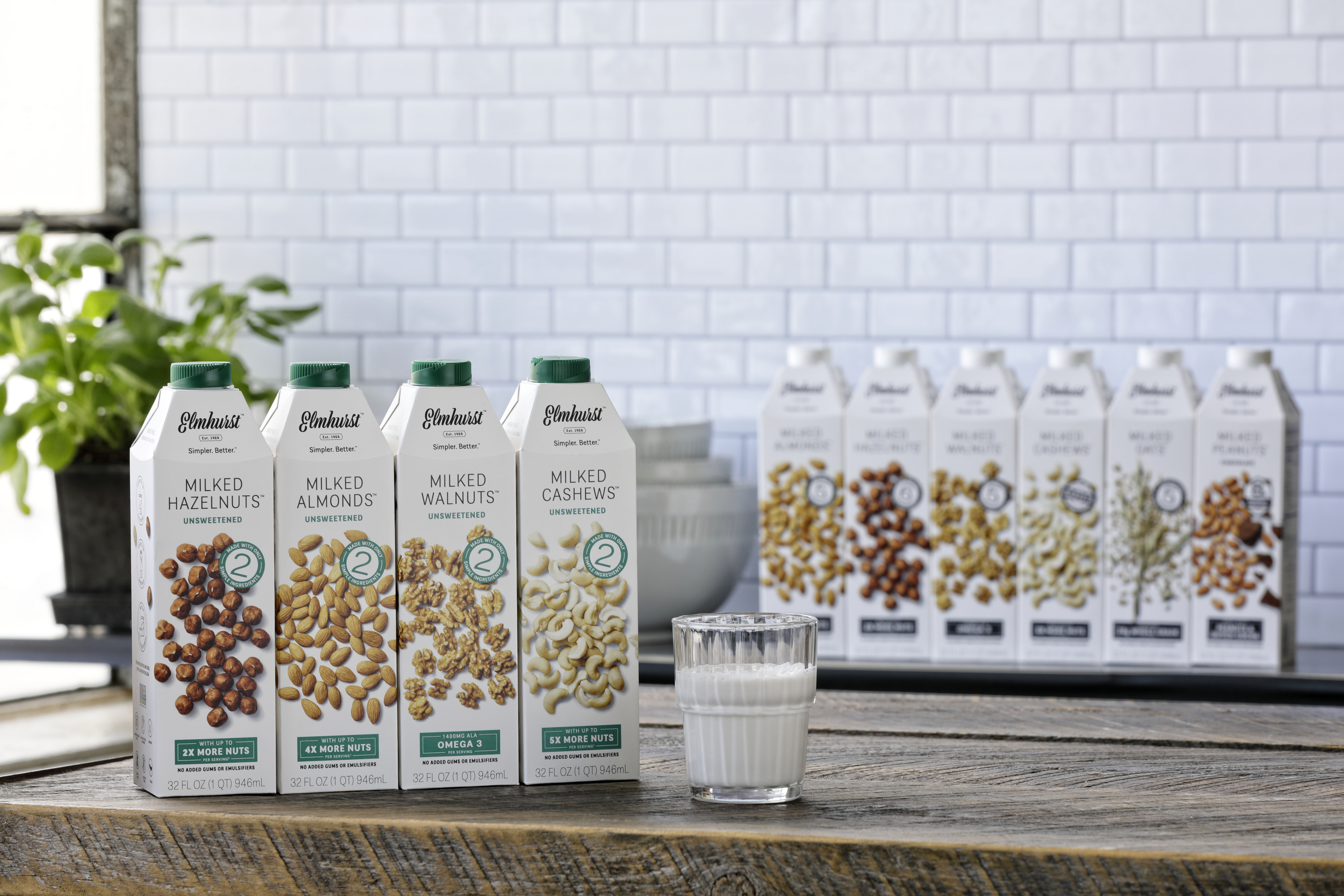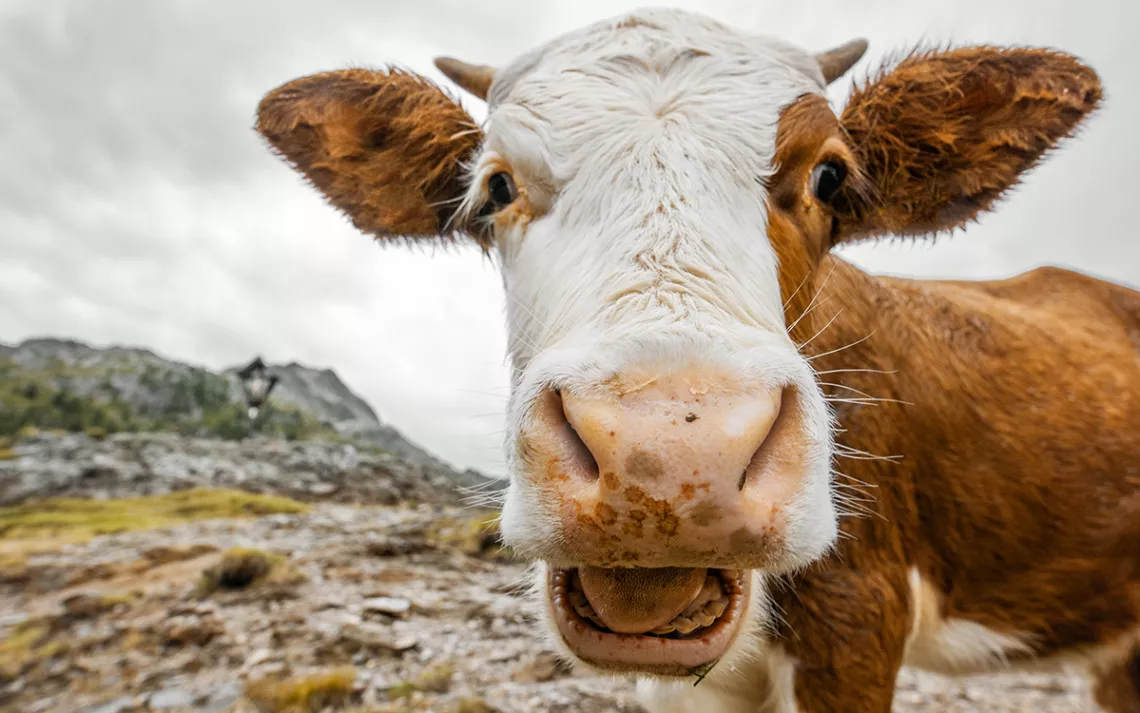What We Talk About When We Talk About Milk
Inside the rise—and semantic battles—of plant-based dairy products
Walk the dairy aisle of any grocery store and it’s immediately apparent: There have never been more plant-based milks on the market. Beyond staples like soy and almond milk, ingredients like flax, macadamia nuts, peas, coconuts, cashews, hemp, and oats are now mainstays of non-dairy alternatives. It’s a shift that’s clearly unnerved the dairy industry, which has recently been pushing for the government to crack down on the use of the term “milk.”
The fight is on—the FDA recently asked the public to submit comments on the labeling of plant-based alternatives to traditional milk, yogurt, and cheese. How and when the matter will be resolved is anybody’s guess, but one thing is certain: Plant-based milks and other nondairy products are no passing fancy; they’re arguably the wave of the future.
After all, the 61 percent rise in sales for nondairy milks, cheeses, and yogurts over the past five years can be credited to consumer demand. According to Mintel data, plant-based milks make up 13 percent of today’s total US fluid milk sales, while overall sales of dairy milk have slumped 15 percent since 2012.
Contrary to popular belief, though, it’s not that consumers aren’t buying dairy milk. Mintel data reveals that 90 percent of individuals who buy nondairy milk also purchase dairy milk. Still, the American public is consuming less cow juice. Asked why, 19 percent of participants in the Mintel survey cited health reasons.
But that’s not the only reason. “Consumers are purchasing plant-based milks for a broad spectrum of reasons, including health benefits, diet preferences, ethical reasons, and simply because they like variety,” says Nicole Manu, staff attorney for the Good Food Institute, a nonprofit that promotes alternatives to products of conventional animal agriculture. “At the end of the day, consumers continually make purchasing decisions based on taste, price, and convenience, and plant-based milks are no different.” She notes that a wide variety of plant-based milks are available at traditional grocery stores at prices comparable to that of cow’s milk and in a full range of flavor profiles (yes, you can swig vanilla, chocolate, fruit-flavored, sweetened, and unsweetened versions of alternative plant-based milk).
Concerns about the environment have also turned consumers on to plant-based milks (and other nonanimal products). “People understand that it’s imperative to reduce meat consumption for the environment,” says Michele Simon, executive director of the Plant Based Food Association. “Although beef has a bigger footprint, dairy production is certainly up there.”
According to Inside Climate News, the conventional dairy industry is responsible for 4 percent of all human-caused greenhouse gas emissions, mostly in the form of methane, an especially potent greenhouse gas. Every gallon of cow’s milk consumed in the United States results in greenhouse gases equivalent to 17.6 pounds of carbon dioxide emissions. “Plant-based milks require less land and water, and contribute far less to climate change than cow’s milk,” Manu says. Not to mention the fact that surplus milk is currently being made into cheese faster than consumers can eat it. “The government is currently stockpiling [cheese], yet another energy suck,” Simon says.
The bottom line? “Plant milk has a much lower carbon footprint than dairy,” says Henry Schwartz, owner of Elmhurst Milked in Elma, New York. “It’s also more ethical to animals.”
Schwartz speaks from an interesting perspective. Until 2016, he was head of Elmhurst Dairy, a company that processed dairy milk. Although dairy was part of Schwartz’s heritage—his father and uncle started the company 90 years ago in Queens, New York—he says he couldn’t escape the undeniable truth. “Dairy milk was in a decades-long decline, which made it hard to be profitable,” Schwartz says, citing the industry’s thorny issues regarding sustainability and health. Yet, the lifelong dairyman didn’t have any interest in getting out of milk completely.
A few years ago, fate intervened when Schwartz learned of a special cold-milling technology developed by plant food scientist Dr. Cheryl Mitchell—through which he could make milk alternatives from almonds, cashews, walnuts, hazelnuts, peanuts, oats, and brown rice. It made him rethink his business model. “Being a lifelong dairyman who was stewarding a family tradition, it required some personal revelation, but I realized we could extract all of the source ingredients’ nutrients in a pure, unadulterated way—using just water—without adding gums or emulsifiers, which would allow our products to have a clean ingredient label and authentic taste,” Schwartz says.
Soon afterward, he shocked the industry by closing Elmhurst Dairy and opening Elmhurst Milked, an entirely plant-based beverage company. Today, Elmhurst’s nationally available products include milks made from nuts, oats and rice, and Schwartz, who has since transitioned to a plant-based diet, says cheeses and yogurts may be in the company’s future.

However, if Schwartz’s contemporaries in the traditional dairy industry get their way, Elmhurst and other plant-based companies could no longer be allowed to use the term milk. Why? “Pointing to milk’s standard of identity, the dairy industry claims that the labels of plant-based milks are improper; i.e., they are misbranded and cause consumer confusion,” Manu says, noting that plant-based-milk makers aren’t in fact claiming that their products are sourced from cow’s milk.
No doubt most of us grew up assuming that “milk” came from a cow. But one of Merriam-Webster’s definitions—“a food product produced from seeds or fruit that resembles and is used similarly to cow’s milk”—clearly extends beyond the bovine. And according to a survey from the International Food Information Council Foundation, the majority of consumers—38 percent of whom buy plant-based milk some of the time—understand the difference between milk from a cow and that from a plant. Less than 10 percent of survey participants actually expressed belief that these alternatives contained cow’s milk, while 72 to 75 percent correctly stated that nondairy milks like soy and cashew contain no cow’s milk.
Just last week, the largest appeals court in the United States dismissed a lawsuit against Blue Diamond Growers, ruling that its almond milk labeling does not deceive consumers into thinking it is derived from dairy. And Manu and Simon are confident that the FDA will ultimately rule in favor of the unfettered labeling of plant-based products. And if not? “It would violate the plant-based producers’ First Amendment rights,” Manu says, noting that products like rye bread and rice noodles use standardized terms on their labeling in the same manner that plant-based milks do. “The FDA shouldn’t treat plant-based milks differently.”
Schwartz echoes this sentiment, noting that the word “milk” reflects a liquid emulsion derived from the essential nutritional components of its source. “If you can get this from nuts or grains, I don’t see how cows can have a monopoly on the term,” he says. His advice for fellow dairy farmers? “Whether through capital investment or some other means, businesses will have to evolve their offerings to keep up with consumer demands and trends.”
If recent statistics are any indication, that’s wise advice, as consumer demand for plant-based products shows no signs of slowing. And who knows? In the end, as long as beverage companies continue providing more healthy, humane, and sustainable products, consumers may not really care whether or not they’re called milk.
 The Magazine of The Sierra Club
The Magazine of The Sierra Club




